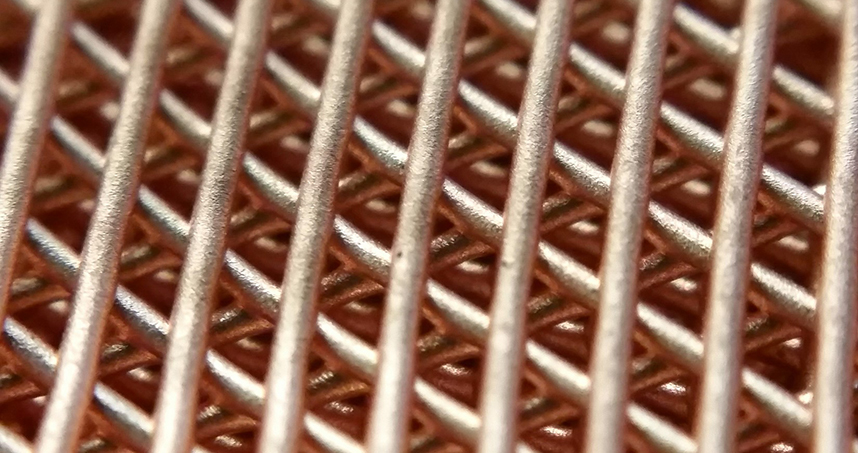By Jon Gabay, contributing writer
What if our 3D printers and replicators could use raw dust and materials from the moon, Mars, or other celestial bodies as we venture off our world into the vast expanses around us? It’s akin to the early adventurers looking out over the seemingly endless seas not knowing what lay ahead. A sailing ship’s store room and tools meant life in the unknown. At least they didn’t have to store oxygen.
While food, air, and water are consumables and can be reclaimed at fair efficiencies, the need for raw supplies spans biological and non-biological realms. Not only are foodstuffs consumable, so, too, are tools, assemblies, electronics, and even wire, cable, and fiber optics. Imagine being able to manufacture a custom prosthetic in deep space using the material at hand from a local planetoid, asteroid, comet, or dust stream.

Even conductive layers like copper can be printed in 3D, allowing cost-effective 3D circuit modules instead of boards. Image source: Northwestern University.
Once in space or on a colony outpost, the key to survival is to be able to use what you have on hand as well as what’s there to make what you need. Now, a team of Shah Tissue Engineering and Additive Manufacturing researchers at Northwestern University are able to use a simulated amalgam of lunar and Martian soil to create raw materials that a 3D printer can use. The alien dust is an integral part of the ink mixture and can coexist with other printing materials to create the tools and equipment on demand using natural elements, including prosthetics.
We’ve all been impressed by the simple elegance of 3D printing and the many ways that 3D printers deposit materials in a regular and consistent way. Shah has pioneered the art of printing hyper-elastic bone, 3D graphene, and carbon nano-tubes with metal alloys.
Our modern telescopes and radar units can pretty well tell what’s in our immediate neighborhood as we navigate ourselves to sources of raw materials. And our instruments and tools can help to identify and isolate compounds, elements, and biologics. The raw goods used for manufacturing can take up most of the space, and here is where sourcing it locally matters.
Making tools and apparatus from Martian dust uses simple polymers and solvents, and an extrusion process allows the complex 3D structures to layer up. The hard, rubber-like resultant material is somewhat flexible, even though at its heart is up to 90% dust. True independence comes from generating all of the supplies locally to feed the process. This would include being able to reclaim or manufacture new solvents and compounds.
This is when 3D printing, CNC machining, molecular clustering, and multi-turret deposition compounds are all coming together to make a printing-like replicator. Our missions to Mars have really opened up our eyes to the availability of water and oxygen, as well as given us a good understanding of the constituent elements of the Martian soil. Any colony or outpost will need to be able to access and use these raw building blocks to create a new society.
Like an 8-pen plotter of yesteryear, a space-based 3D printer with turret that can select different formulations to be deposited layer by layer will be made up of mostly Martian dust. This can make an enclosure that is also a 3D circuit board and connector, for example, with a user interface built in. And the ability to print layers of copper, graphene, structural material, flexible material, biologically compatible materials, insulators, and possibly even semiconductors brings an all-in-one manufacturing system that works from the ground up.
Advertisement
Learn more about Electronic Products Magazine





